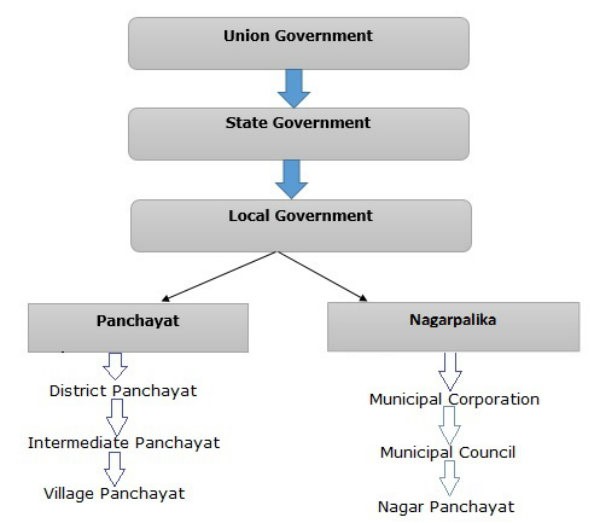Micropicture Data at Panchayat Level Empowers Local Governance
Syllabus:
GS-2:
Local Self Governance, Government Policies & Interventions, Constitutional Amendments
Focus:
● The Ministry of Panchayati Raj officially released the Panchayat Advancement Index (PAI) Baseline Report 2022-23 in April 2025.
● This report, also known as the pdi report, is significant because it presents validated, micro-level data for over 2.16 lakh Gram Panchayats (GPs) across India, facilitating evidence-based planning at the grassroots level.
● The report addresses long-standing challenges related to local governance data accessibility and usability at the panchayat level, aiming to enhance grassroots governance and SDG localization.

Challenges in Evidence-Based Decision-Making in India:
Data Availability and Accessibility
● Although evidence-based decision-making is a government priority, actual usage of local governance data remains limited.
● Delays in Census operations and release of data reduce timeliness and relevance.
● Frequent methodological changes and multiple surveys disrupt consistent time-series data availability.
● Government portals, including https://data.gov.in, gpdp.nic.in, and egram-swaraj.gov.in, host vast datasets but suffer from poor data visualization and analytics tools, making it hard for public and local officials to interpret the data effectively.
Limitations at Local Governance Level
● Most government data portals are designed for senior officials and heads of departments, not for panchayat-level functionaries or elected representatives.
● This results in a focus on the “mega picture” (national or state-level data) rather than the “micro picture” (local or household-level insights).
● Consequently, local decision-making often depends on intuition rather than precise data, highlighting the need for resources like the gram panchayat report.
Understanding Panchayat Advancement Index (PAI):
What is PAI?
● PAI, also known as the panchayat development index (PDI full form), is a composite index measuring performance across 435 local indicators (331 mandatory, 104 optional) with 566 unique data points.
● It covers nine themes aligned with Localization of Sustainable Development Goals (LSDGs), connected to the National Indicator Framework (NIF).
● The 2022-23 report includes data on over 2.16 lakh Gram Panchayats, reflecting a large-scale data validation effort.
Data Validation and Coverage
● About 11,000 GPs were excluded due to incomplete or unvalidated data.
● While 25 states/UTs provided near 100% validated data, Uttar Pradesh submitted data for only 40% of its GPs, raising concerns about governance and development gaps in the state.
Accessibility and Utility
● The PAI portal (www.pai.gov.in), also known as the panchayat gateway or pid portal, presents data in a user-friendly format, understandable to sarpanches, ward members, and local officials.
● It allows constituency-wise report generation, useful for Members of Parliament (MPs) and Members of Legislative Assembly (MLAs) to target specific local development interventions.
● The portal provides a pdi login feature for authorized users to access and update information.
Constitutional Provisions Regarding PRIs (Panchayati Raj Institutions):
● 73rd Constitutional Amendment Act, 1992:
○ Granted constitutional status to PRIs.
○ Introduced a three-tier system: Gram Panchayat (village), Panchayat Samiti (intermediate), and Zila Parishad (district level).
○ Provided for regular elections, reservation of seats for SCs, STs, and women, and tenure of 5 years.
○ Enabled State Election Commissions to conduct PRI elections.
● Part IX of the Constitution:
○ Titled “The Panchayats“, includes Articles 243 to 243-O.
○ Specifies structure, composition, functions, and powers of PRIs.
● 11th Schedule of the Constitution:
○ Lists 29 subjects (e.g., agriculture, rural housing, health, sanitation) devolved to PRIs.
○ Aims to enhance local self-governance.
● Article 40 (DPSP):
○ Directs the State to organize and empower village panchayats, promoting grassroots governance.
Importance of Linking Data to Outcomes:
From Data to Action
● The panchayat development index shifts focus from just collecting data to linking it with measurable outcomes, such as whether a GP is a “Healthy Panchayat.”
● This helps identify specific performance gaps in areas like health, education, water, and rural development, enabling targeted interventions.
● It clarifies roles for stakeholders including Aspirants, Beginners, elected representatives, and frontline workers.
Coordination Among Stakeholders
● Success in improving PAI scores depends on strong coordination between frontline workers from various departments (health, education, rural development), elected representatives, and civil society organizations (CSOs).
● This collaborative approach is crucial for achieving localized Sustainable Development Goals (SDGs) and the SDG 2030 Agenda.
Role of Institutions and Civil Society:
Support from Educational and Research Institutions
● Over 4,000 institutions linked with the Unnat Bharat Abhiyan are encouraged to study at least five GPs in their vicinity.
● These institutions can explain PAI scores to communities, helping them understand the local development status and what actions can improve their panchayat’s standing.
● Such engagement fosters community participation and strengthens grassroots democracy.
Leveraging CSR and Development Funds
● The PAI scorecard offers a transparent framework for better utilization of funds from sources such as:
○ Corporate Social Responsibility (CSR) initiatives
○ Prime Minister’s Mineral Area Fund via District Mineral Foundation (DMF)
○ MP Local Area Development Scheme (MPLADS) and MLA Local Area Development Scheme (MLALADS)
● Aligning these resources with PAI outcomes ensures strategic and impact-driven local development.
The Way Forward: Strengthening Data Use at Grassroots
Need for Data Analysts at Local Levels
● There is an urgent requirement for trained data analysts at block and district levels who can generate and interpret regular report cards for various stakeholders.
● Empowering local officials with data expertise can improve planning, monitoring, and accountability.
● This includes training for positions like the Block PAI Nodal Officer and preparing candidates for the block development officer exam.
Expansion to Urban Local Governments
● Similar performance and achievement indices should be developed for urban local bodies to complement rural efforts.
● Periodic publication of PAI reports can track progress and motivate continuous improvement.
● Initiatives like the gram panchayat logo gujarat showcase state-specific efforts to strengthen local governance identity.
Call to Action
● PAI is more than a ranking system; it’s a call for support and action for underperforming panchayats.
● Effective use of modern data visualization and communication tools can demystify data for all stakeholders, ensuring everyone understands their role in advancing development goals.
● Ultimately, micro-level data-driven policymaking can help India achieve its SDGs by 2030.
Conclusion:
The Panchayat Advancement Index (PAI), also referred to as the index of panchayat, represents a paradigm shift by providing granular, validated data linked to tangible development outcomes at the grassroots level. This empowers local leaders, communities, and officials to take informed action, bridging the gap between data availability and its meaningful use. To realize the full potential of evidence-based governance, states must improve data coverage, invest in capacity-building, and promote inter-departmental and civil society collaboration. The PAI offers a valuable tool for India’s path towards inclusive, sustainable development by 2030, fostering holistic development and participatory development at the local level.
The PAI, also known as the panchayat development index (PDI), serves as a comprehensive data management platform that enhances transparency in governance. It provides socio-economic indicators and thematic scores across multiple domains, offering a multi-domain assessment of Gram Panchayats. The index categorizes panchayats into performance categories, with top performers labeled as “Front Runners.”
To implement the PAI effectively, each state appoints a State PAI Nodal Officer, while Block PAI Nodal Officers oversee data collection and validation at the block level. This structure ensures accurate gram panchayat reports and reliable pai scores. The index supports the creation of Panchayat Development Plans, promoting community-centered development and helping panchayats set local targets aligned with Localized SDGs.
By leveraging the PAI, policymakers, researchers, and local leaders can access a wealth of information through the PAI portal (www.pai.gov.in). This resource facilitates evidence-based decision-making and supports the formulation of targeted interventions to address specific development challenges at the panchayat level. The availability of the panchayat development index pdf further enhances accessibility to this crucial information.
The significance of the PAI extends beyond local governance, as evidenced by its inclusion in panchayat development index UPSC study materials, highlighting its relevance to broader governance and policy discussions in India.
Source: TH
Mains Practice Question:
“Discuss how the Panchayat Advancement Index (PAI) enhances evidence-based governance at the grassroots level in India. What challenges remain in utilizing micro-level data for local development, and how can they be addressed?”





